Investor News
Not much gain, despite energy price pain
Judith Sloan, Economics Editor at The Australian, is never one for mincing words...
"Still paying the price for energy delusions"
In the below article, Sloan notes that Australia has gone from having among the cheapest electricity in the world to being among the most expensive, laying a significant chunk of the blame squarely on the lack of 'firming' capacity, driven by perverse market interventions.
Firming capacity is the dispatchable power generation required to kick in when the wind doesn't blow and the sun doesn't shine. It includes hydro, natural gas, black coal, brown coal, diesel and biomass.
The 'perversion' of the market Sloan refers to is the Renewable Energy Target or RET. It consists of:
- The Large Scale Renewable Energy Target, which mandates the purchase of 33,000 GWh of additional renewable electricity a year by 2020.
- The Small Scale Renewable Energy Scheme, which subsidises solar panel systems, small-scale wind systems, small-scale hydro systems, solar water heaters and air source heat pumps.
Combined, these programs have seen a large increase in wind and solar capacity, coinciding with the closure of three coal power stations; Playford B (2012, 240 MW) and Northern (2016, 520MW) power stations in South Australia and Hazelwood (2017, 1600MW) in Victoria.
The exit of ~2360MW of coal capacity could not be filed by the entry of more than 7600MW of wind and solar capacity, resulting in large jumps in wholesale electricity prices.
The reason?
Simple: of that 7600MW, around 5000 was solar PV and 2600 was wind.
Solar PV has an average capacity factor of 22% and wind is around 30%.
The effective capacity is therefore only around 1900MW. And that capacity isn't dispatchable, which translates to increased price volatility during supply-demand gaps, causing higher average wholesale costs.
Wind farm promoters (and governments) are fond of couching their capacity in terms of how many homes a new project can power. But, they always omit the caveat; 'sometimes'... and the qualifier 'not quite sure exactly when'.
Here's Australia's wind power variability for January 2019, month-to-date:
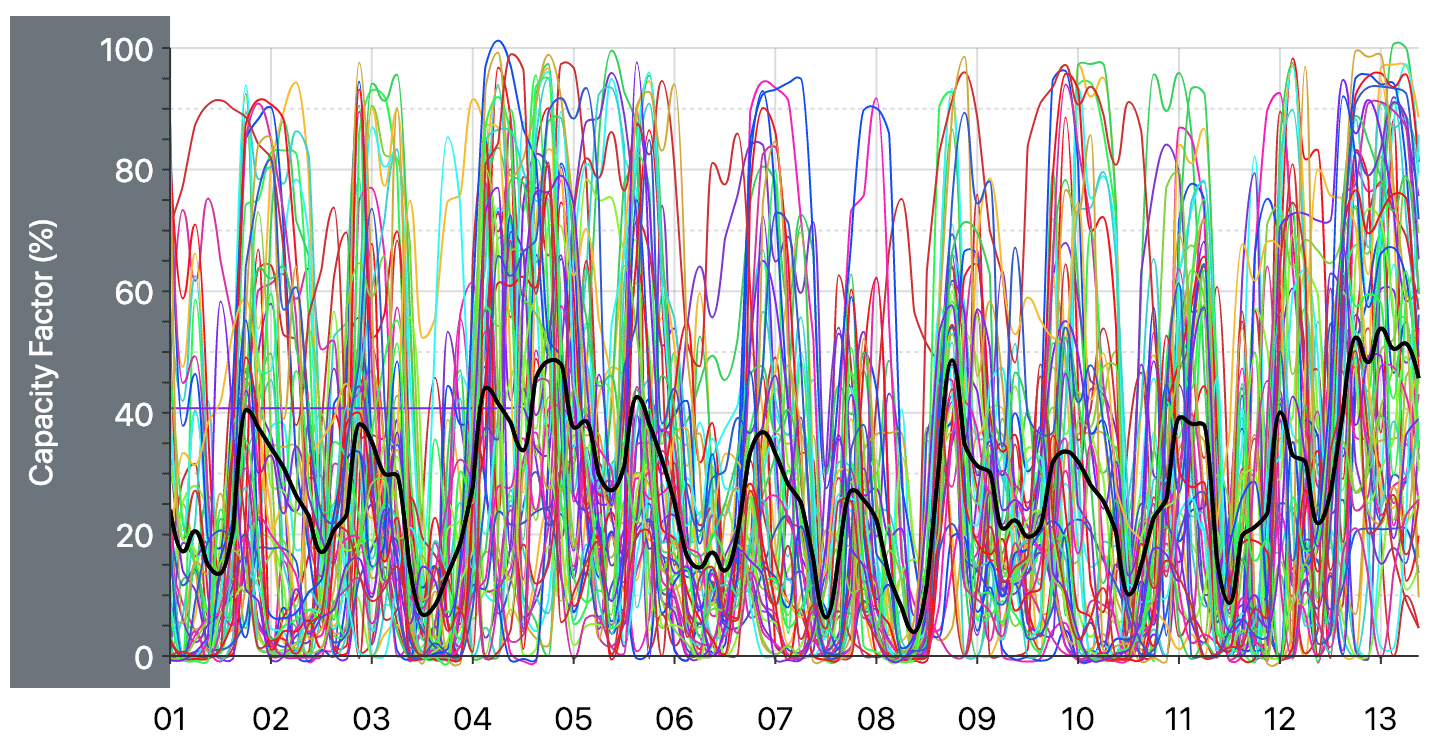
Rooftop solar PV is less variable on an intra-day basis, but its maximum output is subject to cloud cover:
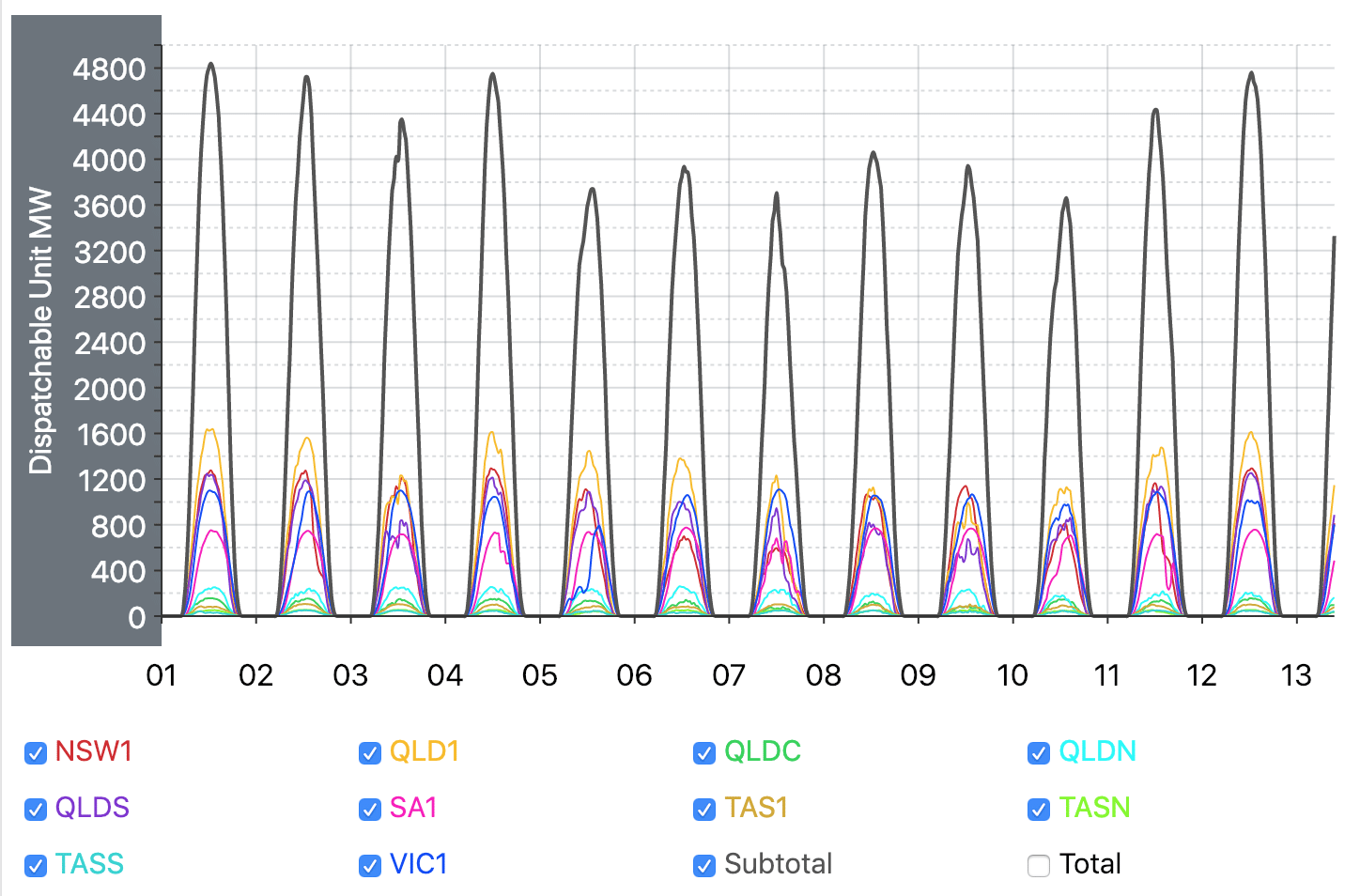
Notice the daily variation in peak output for January 2019 ranges by around 1100MW, from about 3700MW to just over 4800MW.
And while the intra-day variability of rooftop PV solar is less than wind, its supply profile (11 Jan 2019, below) doesn't match the demand profile, 'hollowing' out demand for reliable, dispatchable coal and 'missing' the morning and evening peaks.
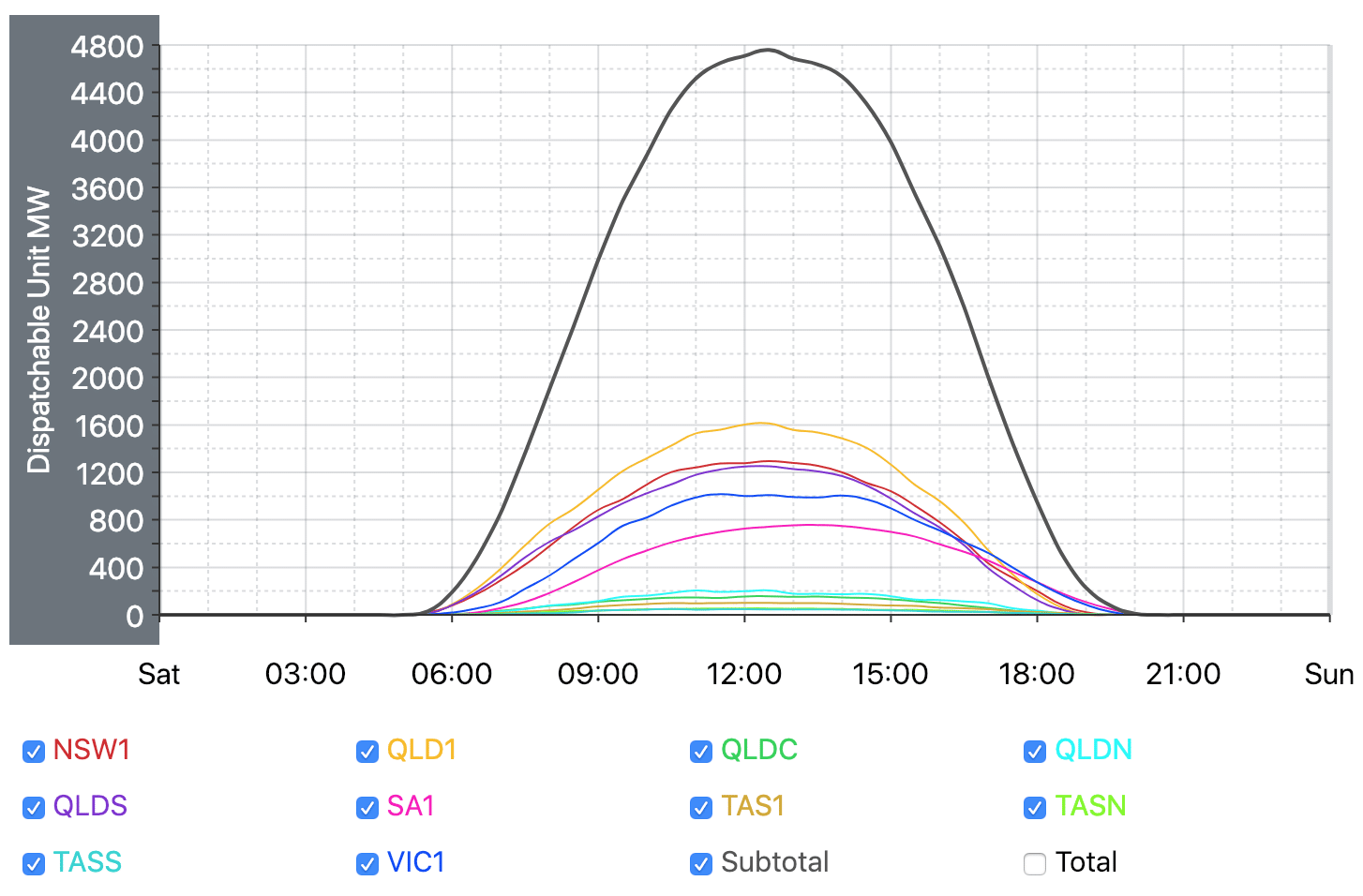
NEM generation profile (11 Jan 2019):

The overall energy mix to deliver the above output looked like this:
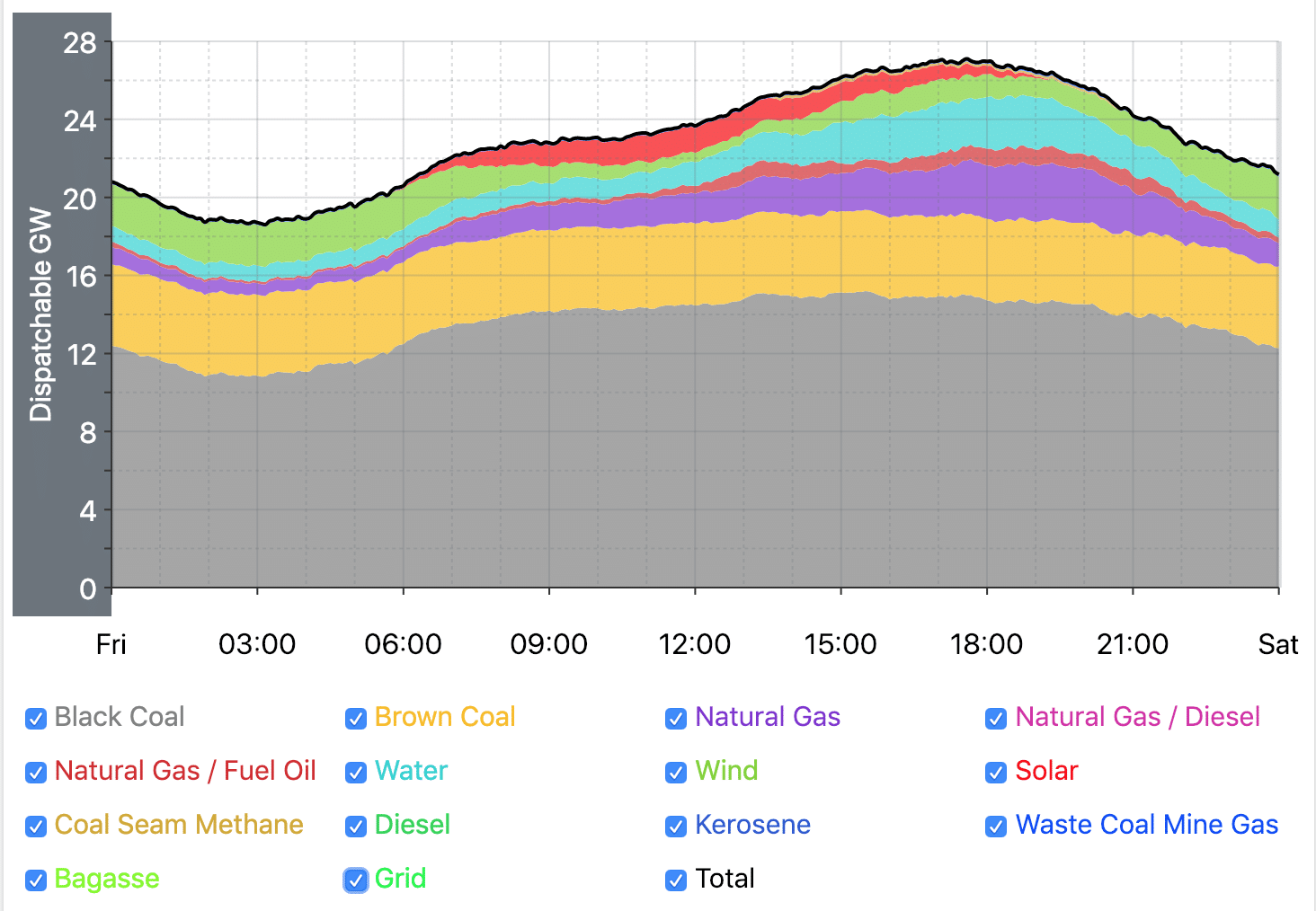
Note how coal accounts for 80%, even at 3 am when demand is at its lowest and wind is delivering it's highest output of the day - 2.1GW.
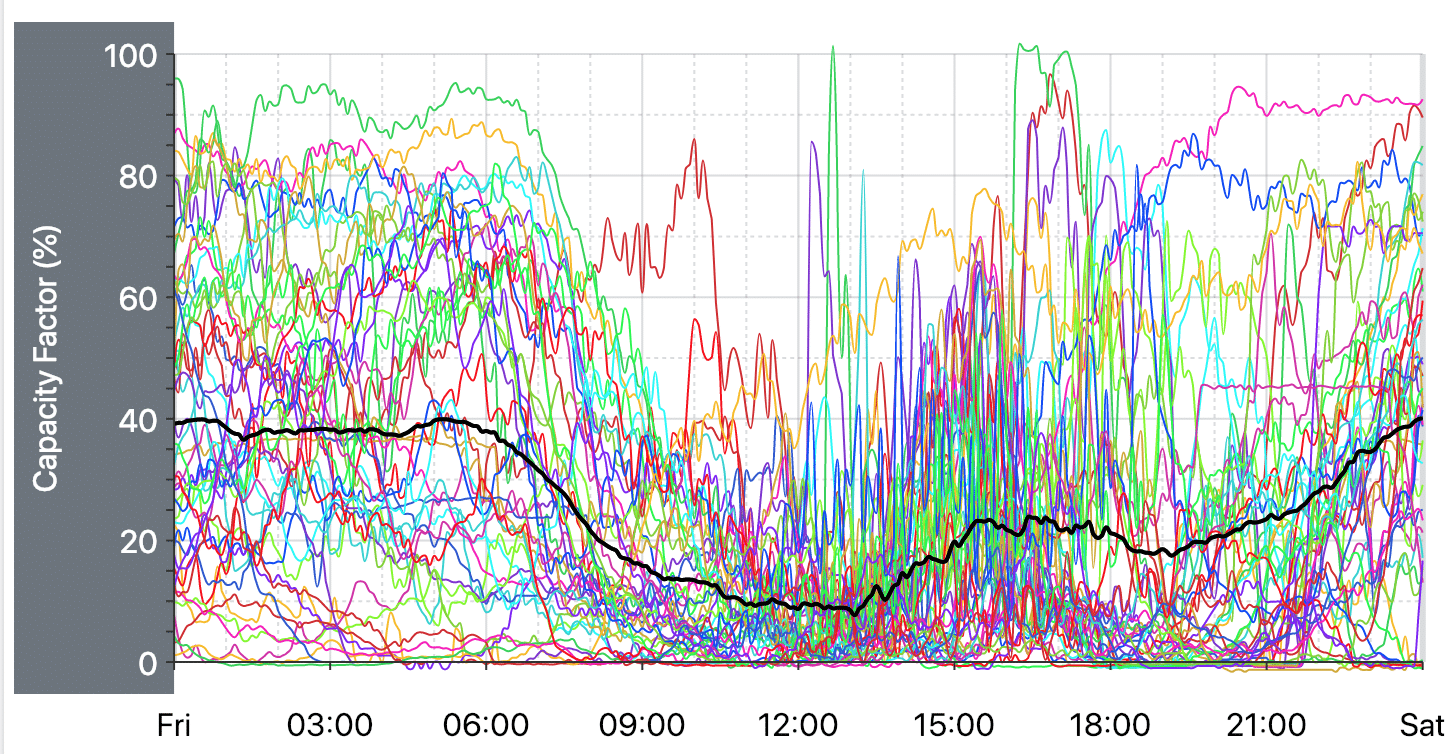
Some 9 hours later, at midday, wind has dropped to 10% of its installed capacity despite rising demand.
And at 3 pm, it manages to muster just over 20% of its capacity, before tapering off a little as we hit our peak demand at 6 pm. No problem though, coal accounts for 70% of our output, with hydro and natural gas increasing their contribution to fill the gap left by solar as the sun sets and intermittent wind struggles to deliver 1.2 GW of our 27GW evening needs.
What about those marvellous batteries?
If you take a look at the green area in the chart below, you'll see how much grid battery storage contributed.
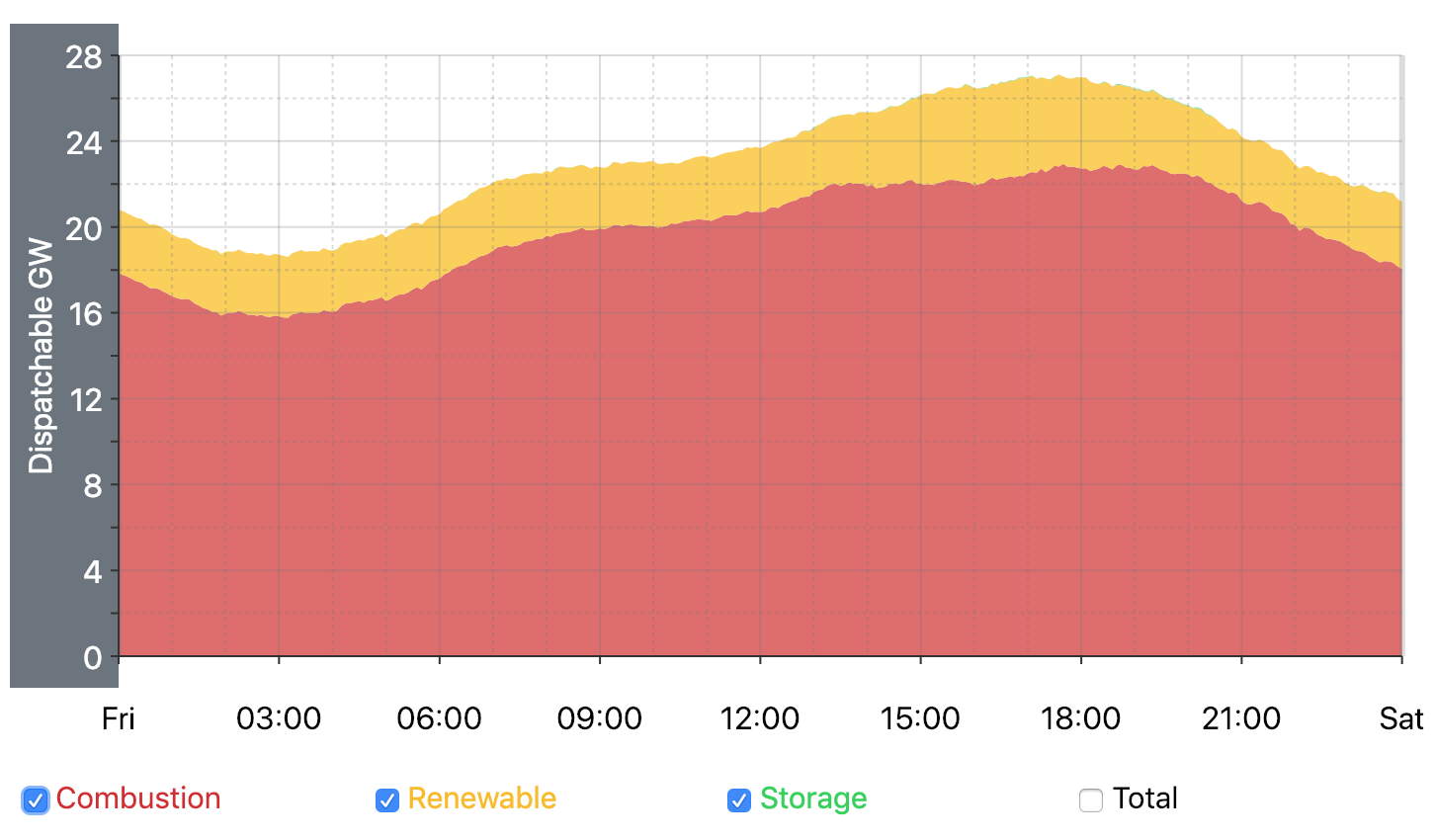
Hmm. We may need to zoom in.
Let's reduce the scale on the left-hand side of the chart from 28GW down to 2GW and uncheck 'combustion' and 'renewable'.
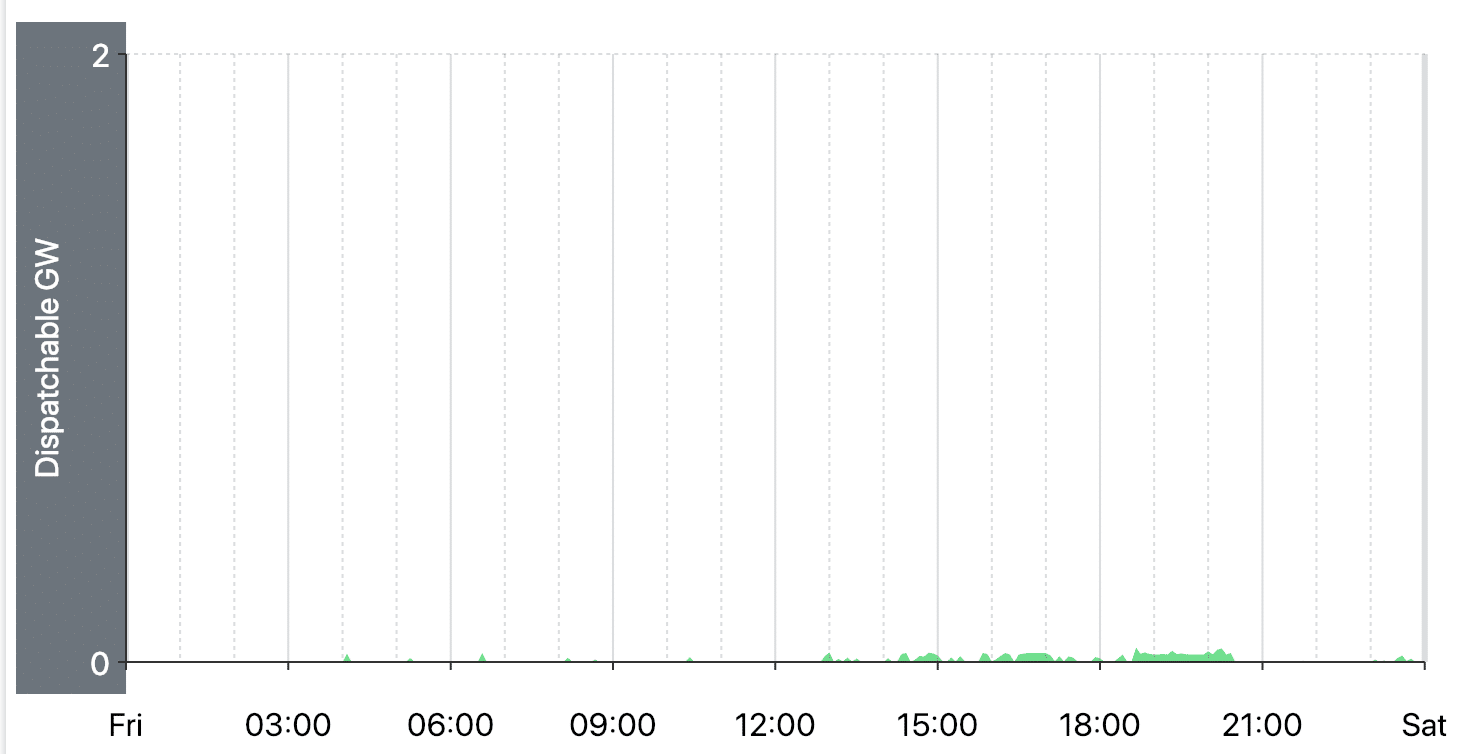
The point here is wind and solar can't deliver the amount or quality of electricity required to sustain our modern power needs.
As Sloan points out in her article:
The key missing ingredient has been investment in firming capacity that is available when renewable energy sources don’t generate any power, which is about 30 per cent to 50 per cent of the time.
Batteries are proposed as a way to store excess wind and solar. But, as we recently highlighted here, adding firming capacity to wind and solar reduces its economic viability below that required to build or sustain a modern society.
Relying on hydropower (the cheapest renewable) to fill the gap is great when the dams are full.
Turning to natural gas to step in to fill the gap would be great if we had cheap, abundant supplies like the US. But we don't. And bans on exploration and development of new gas reserves will ensure prices stay high, making electricity more expensive.
Wind and solar should earn their place in the energy mix, but the level of penetration needs to be carefully planned and managed and set at a level that maintains or improves reliability and affordability.
The RET achieves the opposite:
- Less reliability
- Less affordability
So, how do we deliver lower CO2 intensity?
Right now, the highest CO2 intensity power generation in Australia is brown coal.
By drying brown coal in an energy efficient and cost-effective manner, our Coldry process can enable the deployment of high-efficiency, low emission (HELE) technology
Read more...
Still paying the price for energy delusions
18 December 2018 | The Australian | Judith Sloan
In this newspaper's annual stocktake of the views of business chief executives, the issue of energy prices frequently was mentioned as being of serious concern.
Source: High cost of energy delusions